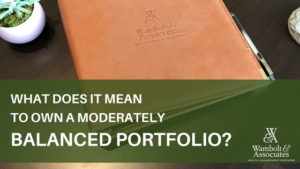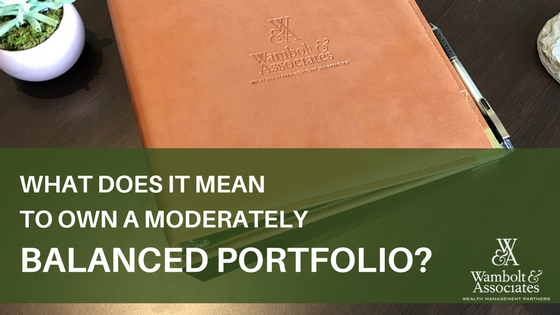Like everything in life, moderation is the key to a long-term investment strategy. But when it comes to reviewing short-term investment rates of return, we tend to become greedy.
It’s common for a client to compare their portfolio return to what they see on the news. Last year when the S&P 500 had a banner year, closing out 2017 up 19.5%, a client’s portfolio may have closed out the year with gains of only 11%. Similarly, the markets fell 10% the first quarter of 2018 and the same client’s portfolio may have only fallen by 1%.
This is moderation by design in your portfolio; swings up and down are more moderate than the market at large. While stocks, or equities, rise and fall with the market, most other asset classes, representing conservative investments, can stagger when the markets are on fire. When volatility kicks in and investors hit the exit button running to the more conservative investments, the “conservative” half of a moderately balanced portfolio gets a boost.
Measuring impact
The performance of stock and more conservative asset class investments are measured differently. Stock returns clearly present in gains and losses while conservative investments are commonly measured in income. Although conservative investments may demonstrate little to no growth, they are typically producing income in the form of dividends and interest in amounts equal to anywhere from 3% to double digits.
Stock growth is easier to measure than income-bearing investments. It’s easy to see stock prices go up or down over time and confirm whether a stock is moving in the right direction. With income-producing assets, we don’t see the same peaks and valleys but we do see, and can measure, the amount of money derived from dividends and interest.
What you should own
Managing a moderately balanced portfolio is about more than being attuned to your risk profile. It’s about knowing what you should own to keep your portfolio returns from inordinate highs and lows. Rebalancing involves periodically buying or selling assets in a portfolio to maintain an original desired level of asset allocation, such as 50% stocks and 50% bonds.
So whether your investment appetite is aggressive, conservative or somewhere in the middle, your Wambolt advisor can help you select and periodically rebalance your portfolio for the long-run. This way you can do more living and less worrying during the market’s peaks and valleys.


